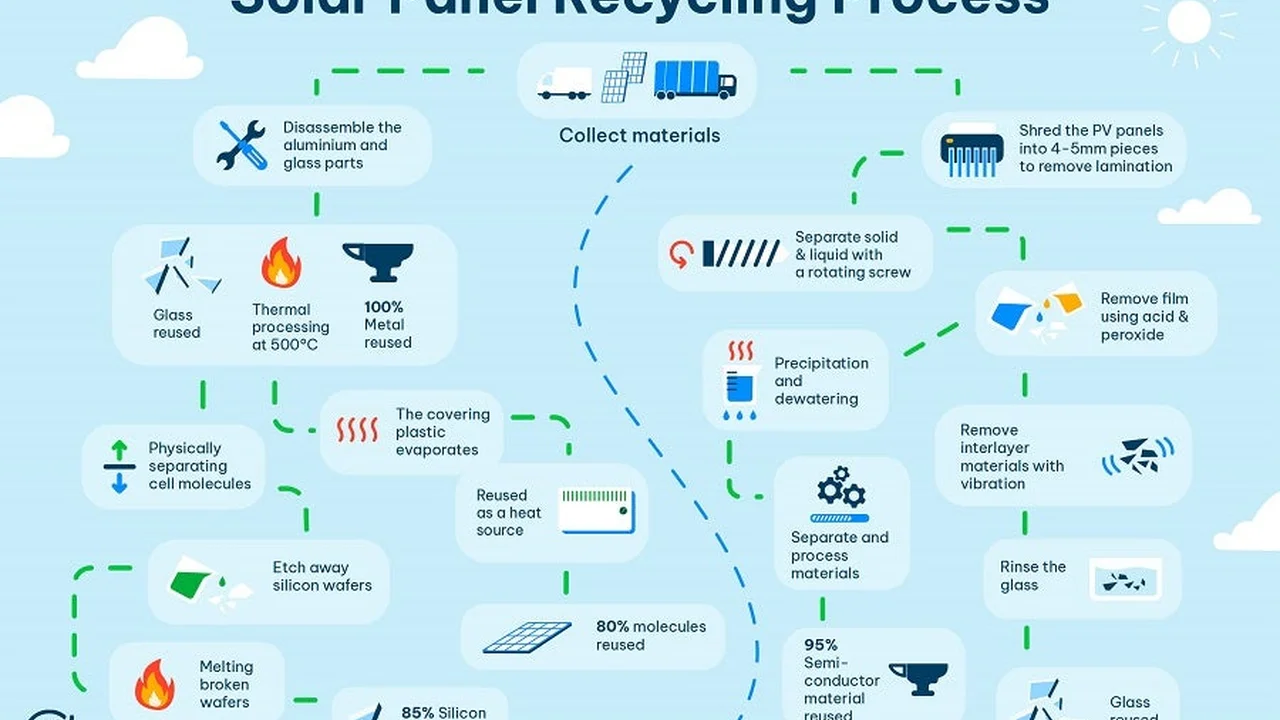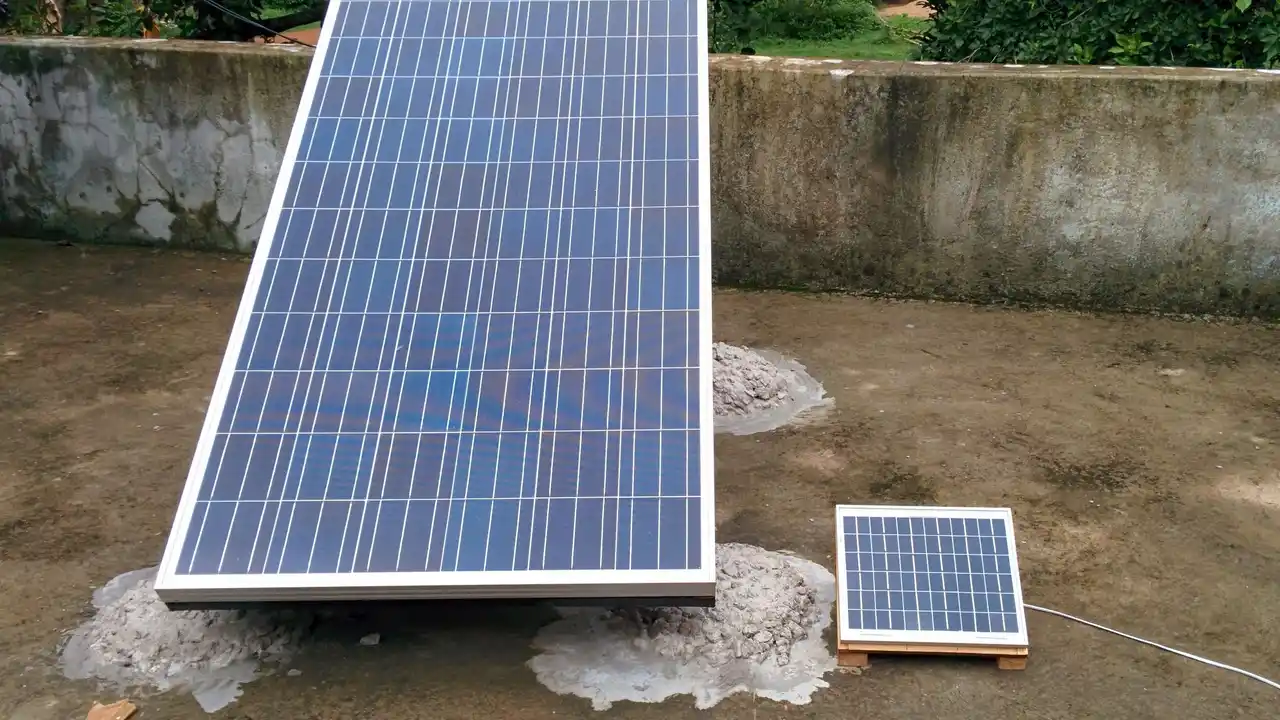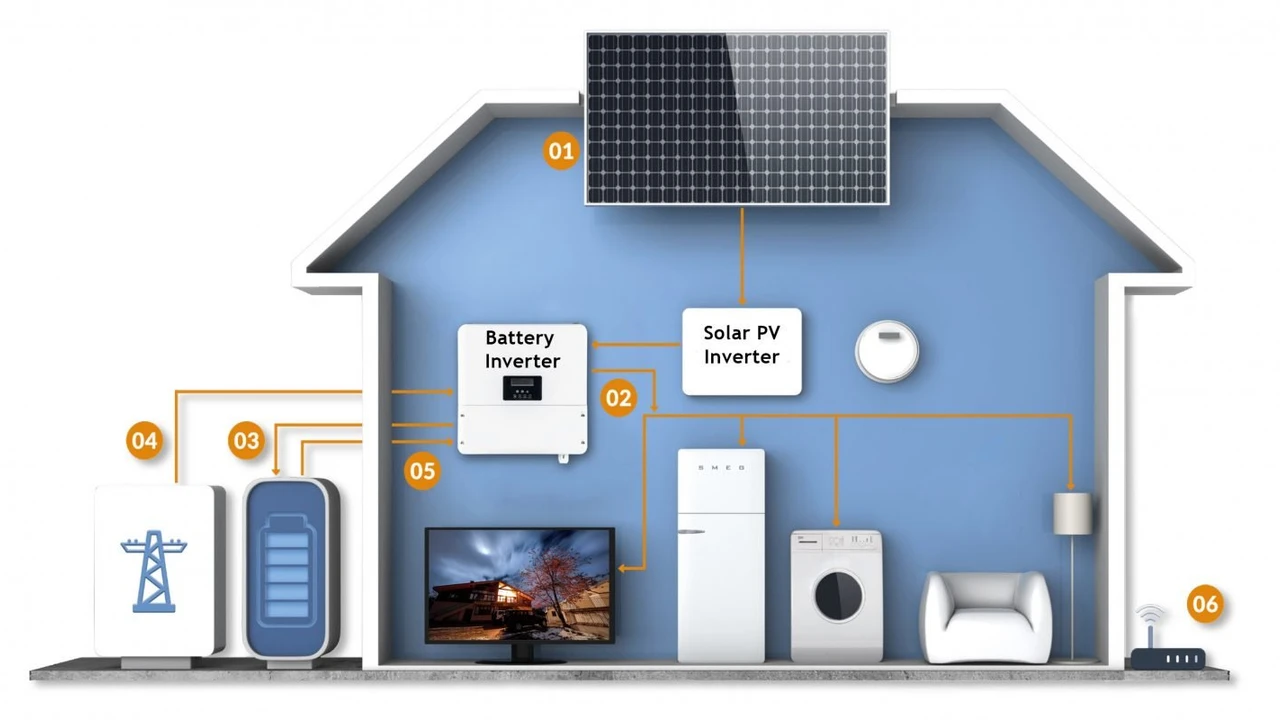Solar Panel Recycling: What Happens at the End of Life?

The Growing Problem of Solar Panel Waste and the Need for Recycling
Alright, so you're thinking about solar panels, maybe even got some gleaming on your roof. Awesome! But let's be real, nothing lasts forever. Those panels are gonna kick the bucket someday. And that raises a big question: what happens to them then? We're talking about solar panel recycling, folks, and it's a topic that's becoming increasingly important as more and more panels reach their end-of-life.
Think about it – tons of materials like silicon, glass, aluminum, and even small amounts of heavy metals are packed into each panel. Just chucking them in a landfill? Not exactly eco-friendly, right? That's why we gotta talk about recycling. It's not just about being green; it's about recovering valuable resources and preventing potential environmental damage.
The amount of solar panel waste is projected to skyrocket in the coming decades. We're talking potentially millions of tons! Without proper recycling infrastructure, we're staring down the barrel of a serious waste management challenge. So, understanding the process and advocating for better recycling practices is crucial.
Understanding the Solar Panel Recycling Process: Step-by-Step
Okay, let's break down what actually happens when a solar panel goes to the recycling plant. It's not as simple as tossing it in the blue bin, that's for sure. The process generally involves these steps:
- Collection and Transportation: First, the panels need to be collected from homes, businesses, or solar farms. They are then transported to a specialized recycling facility. This logistical aspect is often a significant cost factor.
- Pre-processing: This involves removing the aluminum frame and junction box. These components can often be recycled separately using conventional methods.
- Material Separation: This is where things get interesting. The remaining panel goes through a process to separate the different materials. This often involves shredding, thermal treatment (heating to break down adhesives), and chemical processes.
- Silicon Recovery: Silicon is the most valuable material in a solar panel. Recovering high-quality silicon is key to making recycling economically viable. Different recycling methods exist for different types of solar panels (crystalline silicon vs. thin-film).
- Glass Recovery: The glass from solar panels can be recycled and used in the manufacturing of new glass products, like bottles or insulation.
- Other Material Recovery: Other materials like copper, silver, and lead (in some older panels) are also recovered and reused.
Challenges in Solar Panel Recycling: Technological and Economic Hurdles
While the concept of solar panel recycling is great, it's not without its challenges. Here are some of the key hurdles we need to overcome:
- Technological Complexity: Recycling solar panels is more complex than recycling typical materials like aluminum or glass. The panels are made of multiple layers of different materials, and separating them effectively requires specialized technology.
- Cost: Currently, recycling solar panels can be more expensive than landfilling them, especially if the recovered materials aren't of high quality. This economic disincentive is a major barrier to widespread adoption of recycling.
- Lack of Infrastructure: The infrastructure for solar panel recycling is still developing. There are relatively few specialized recycling facilities, and they are often located far from where the panels are being decommissioned.
- Varying Panel Designs: Different types of solar panels (crystalline silicon, thin-film, etc.) require different recycling processes. This variability adds to the complexity and cost of recycling.
- Hazardous Materials: Some older solar panels contain small amounts of hazardous materials like lead or cadmium. These materials need to be handled carefully during recycling to prevent environmental contamination.
Benefits of Solar Panel Recycling: Environmental and Economic Advantages
Despite the challenges, the benefits of solar panel recycling are significant. Here's why it's worth investing in:
- Resource Recovery: Recycling allows us to recover valuable materials like silicon, aluminum, and copper, reducing our reliance on mining virgin resources.
- Waste Reduction: By diverting solar panels from landfills, we reduce the amount of waste that ends up polluting our environment.
- Environmental Protection: Proper recycling prevents the release of hazardous materials into the environment.
- Job Creation: The solar panel recycling industry can create new jobs in collection, transportation, processing, and research.
- Reduced Carbon Footprint: Recycling solar panels requires less energy than producing new panels from virgin materials, reducing our carbon footprint.
Specific Solar Panel Recycling Technologies and Methods
Let's dive into some of the specific technologies used in solar panel recycling:
- Thermal Treatment: This involves heating the panels to high temperatures to break down the adhesives that hold the different layers together. This allows for easier separation of the materials.
- Chemical Leaching: This involves using chemical solutions to dissolve certain materials, such as silicon or silver, from the panel.
- Mechanical Separation: This involves using mechanical processes like shredding, grinding, and sieving to separate the different materials.
- Pyrometallurgy: This involves using high-temperature smelting to recover valuable metals from the panel.
Policy and Regulation: Driving the Solar Panel Recycling Industry
Government policies and regulations play a crucial role in driving the solar panel recycling industry. Here are some examples:
- Extended Producer Responsibility (EPR): This policy makes manufacturers responsible for the end-of-life management of their products, including solar panels.
- Landfill Bans: Some jurisdictions have banned the disposal of solar panels in landfills, forcing them to be recycled.
- Incentives and Subsidies: Governments can provide financial incentives and subsidies to support the development of solar panel recycling facilities.
- Recycling Standards: Setting standards for solar panel recycling can ensure that the process is done safely and effectively.
Consumer Awareness and Responsibility: What You Can Do
As consumers, we also have a role to play in promoting solar panel recycling. Here are some things you can do:
- Choose Responsible Manufacturers: Support manufacturers who have programs for recycling their solar panels.
- Proper Disposal: When your solar panels reach the end of their life, don't just throw them away. Contact your installer or a local recycling facility to find out how to dispose of them properly.
- Advocate for Recycling: Support policies and regulations that promote solar panel recycling.
- Spread the Word: Educate your friends and family about the importance of solar panel recycling.
The Future of Solar Panel Recycling: Innovations and Opportunities
The future of solar panel recycling looks promising. Here are some of the innovations and opportunities that are emerging:
- Improved Recycling Technologies: Researchers are developing new and more efficient technologies for recycling solar panels.
- Closed-Loop Systems: The goal is to create closed-loop systems where the materials recovered from recycled solar panels are used to manufacture new panels.
- Standardized Recycling Processes: Developing standardized recycling processes can reduce costs and improve efficiency.
- Increased Automation: Automating the recycling process can reduce labor costs and improve safety.
Real-World Examples of Solar Panel Recycling Initiatives
Here are some examples of companies and organizations that are leading the way in solar panel recycling:
- Veolia: A global environmental services company that operates solar panel recycling facilities in Europe and North America.
- First Solar: A solar panel manufacturer that has a comprehensive recycling program for its thin-film panels.
- Renewable Energy Test Center (RETC): An independent testing and certification organization that provides services for solar panel recycling.
Recommended Solar Panels with Strong Recycling Programs
When choosing solar panels, consider manufacturers with established recycling programs. This demonstrates a commitment to sustainability and responsible end-of-life management. Here are a few examples, keeping in mind that availability and program details can change:
- First Solar: Known for their cadmium telluride (CdTe) thin-film panels, First Solar has a leading recycling program that recovers over 90% of the semiconductor material for reuse in new panels.
- Product: Series 6 Plus
- Typical Use Case: Large-scale solar farms, commercial rooftops
- Comparison: While CdTe panels are less efficient than crystalline silicon in some applications, First Solar's recycling program is a major advantage.
- Price: Generally competitive with other large-scale solar panel options (price varies by project size and location).
- SunPower (now Maxeon Solar Technologies): While SunPower previously had a strong recycling focus, the spin-off of Maxeon Solar Technologies has shifted some of the focus. Check the latest information on Maxeon's website for current recycling programs.
- Product: Maxeon 6
- Typical Use Case: Residential and commercial rooftops, known for high efficiency and durability.
- Comparison: Higher upfront cost, but potentially lower lifetime cost due to efficiency and warranty. Needs confirmation on current recycling program.
- Price: Premium pricing compared to standard crystalline silicon panels.
Important Note: Always verify the recycling program details directly with the manufacturer before making a purchase. Programs can change, and availability may vary by region.
Comparing Solar Panel Options: Considering Recycling and Performance
When comparing solar panel options, consider both performance metrics (efficiency, power output, warranty) and end-of-life management. Here's a quick comparison:
| Panel Type | Efficiency | Recycling Complexity | Environmental Impact (Manufacturing) | Typical Cost |
|---|---|---|---|---|
| Crystalline Silicon (Mono- and Polycrystalline) | High (18-22%) | Moderate | Moderate | Moderate |
| Thin-Film (CdTe) | Moderate (16-19%) | Specialized (Requires CdTe Recycling) | Potentially Lower (Depending on Manufacturing) | Competitive |
| Thin-Film (CIGS) | Moderate (15-18%) | Developing Recycling Technologies | Moderate | Variable |
This table provides a general overview. Research specific models and manufacturers for the most accurate information.
Where to Find Solar Panel Recycling Services Near You: A Resource Guide
Finding a solar panel recycling service can be tricky. Here are some resources to help you locate a facility near you:
- Search Online: Use search engines like Google or DuckDuckGo with keywords like "solar panel recycling [your city/region]".
- Contact Your Installer: Your solar panel installer may offer recycling services or be able to recommend a reputable recycler.
- Check with Local Waste Management: Your local waste management authority may have information on solar panel recycling options.
- Industry Associations: Organizations like the Solar Energy Industries Association (SEIA) may have directories of recycling facilities.
- Earth911: This website provides a directory of recycling centers for various materials, including solar panels.
The Importance of Research and Due Diligence in Solar Panel Recycling
Before sending your solar panels to a recycler, do your research and ensure they are reputable and compliant with environmental regulations. Ask about their recycling process, their material recovery rates, and their environmental certifications. Don't be afraid to ask questions!
:max_bytes(150000):strip_icc()/277019-baked-pork-chops-with-cream-of-mushroom-soup-DDMFS-beauty-4x3-BG-7505-5762b731cf30447d9cbbbbbf387beafa.jpg)





